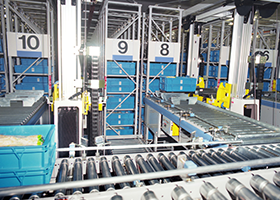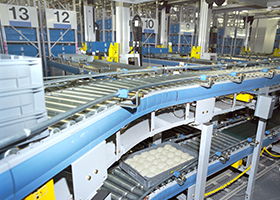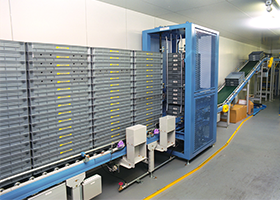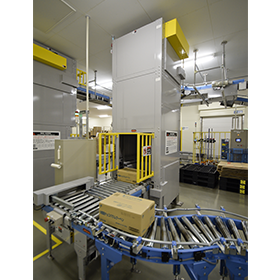Introduction
Industrial automation tools have become a crucial component in modern industries, transforming how businesses operate by improving efficiency, reducing costs, and enhancing workplace safety. With advancements in technology, the automation landscape is continuously evolving, driving innovation across manufacturing and logistics sectors. As we enter 2025, automation trends are set to redefine industries, leveraging artificial intelligence (AI), the Internet of Things (IoT), and robotics for enhanced productivity.
Why Industrial Automation Matters in 2025
Rising Demand for Smart Factories and Industry 4.0
The concept of Industry 4.0 emphasizes the use of smart technologies in manufacturing, creating interconnected factories with real-time data analysis and automation. Smart factories utilize AI, IoT, and cloud computing to optimize production processes and improve efficiency.
Labor Shortages and the Need for Automation
Manufacturing industries worldwide are facing labor shortages, making automation a necessary solution to bridge the gap. Automated systems not only reduce reliance on human labor but also enhance precision and consistency in production.
Increased Focus on Sustainability and Energy Efficiency
Industries are increasingly prioritizing sustainability by adopting energy-efficient automation solutions. Smart automation reduces energy consumption, minimizes waste, and lowers operational costs, contributing to a greener and more sustainable future.

Top Industrial Automation Ideas for 2025
AI-Powered Robotics
AI-driven robots are transforming production floors by performing complex tasks with minimal human intervention. These robots improve efficiency by automating repetitive processes and enhancing quality control. AI-powered predictive maintenance further minimizes downtime by detecting potential equipment failures before they occur.
IoT-Enabled Smart Factories
IoT integration allows factories to operate with real-time monitoring and predictive analytics. By collecting and analyzing vast amounts of data, IoT-driven automation improves decision-making, enhances productivity, and ensures seamless machine-to-machine communication.
Collaborative Robots (Cobots)
Cobots are designed to work alongside human workers, increasing workplace efficiency and safety. These robots assist in repetitive tasks, reducing human fatigue while maintaining precision. Cobots are particularly beneficial for small-scale and large-scale industries alike, improving workflow without replacing human jobs.
Digital Twins for Process Optimization
A digital twin is a virtual replica of a physical process, product, or system. By using real-time data and simulation, digital twins enhance process optimization, allowing manufacturers to test changes before implementation. Industries such as manufacturing and logistics leverage digital twins to improve efficiency and reduce operational risks.
Autonomous Material Handling Systems
Automated Guided Vehicles (AGVs) and Autonomous Mobile Robots (AMRs) streamline material handling processes, reducing human intervention in warehouses and production lines. These systems enhance logistics efficiency, lower labor costs, and improve supply chain management.
Edge Computing for Faster Automation
Edge computing brings data processing closer to automation devices, enabling real-time decision-making without relying on cloud connectivity. This technology enhances industrial automation by improving response times, reducing latency, and ensuring seamless operations.
3D Printing for On-Demand Manufacturing
Additive manufacturing, or 3D printing, plays a significant role in reducing waste and lowering production costs. Automated 3D printing enables on-demand manufacturing, allowing businesses to create customized products efficiently. By integrating automation, industries can streamline production and minimize material waste.

Types of Industrial Automation
Fixed Automation
Fixed automation is best suited for mass production and continuous processes, offering high efficiency and minimal variability. It is commonly used in automotive manufacturing, chemical processing, and packaging industries.
Programmable Automation
Programmable automation is designed for batch production, allowing manufacturers to reprogram machines for different production cycles. This type of automation is beneficial in industries that require flexibility in product variation.
Flexible (Soft) Automation
Flexible automation adapts to dynamic manufacturing needs, allowing rapid product changes without reprogramming. It is ideal for industries with high product variability and short production runs.
Integrated Automation
Integrated automation combines multiple automation technologies, enabling seamless operations with minimal human intervention. This type of automation enhances productivity, improves safety, and optimizes resource utilization.
Benefits of Industrial Automation
- Increased Productivity and Efficiency: Automated systems accelerate production while maintaining precision and quality.
- Improved Safety and Reduced Human Error: Automation minimizes workplace hazards and ensures consistent product quality.
- Cost Savings in Long-Term Operations: Although initial investments may be high, automation reduces operational costs over time.
- Enhanced Data-Driven Decision-Making: Real-time data analysis allows businesses to optimize processes and improve decision-making.
Future Outlook: What’s Next for Industrial Automation?
Emerging Trends Beyond 2025
The future of industrial automation will be shaped by advancements in AI, machine learning, and blockchain technology. Smart automation systems will become more self-sufficient, driving innovation across industries.
Integration of AI, Machine Learning, and Blockchain
AI and machine learning will continue to enhance automation capabilities, enabling predictive analytics and self-learning systems. Blockchain technology will improve supply chain transparency and security.
Challenges and Opportunities
While automation presents numerous advantages, challenges such as high implementation costs, cybersecurity risks, and workforce reskilling need to be addressed. However, businesses that embrace automation will gain a competitive edge in the evolving industrial landscape.
Conclusion
Industrial automation is transforming the way businesses operate, offering enhanced efficiency, cost savings, and improved safety. As we move into 2025, emerging automation technologies such as AI, IoT, and digital twins will drive innovation in manufacturing and logistics. Companies that invest in automation solutions will be better equipped to navigate industry challenges and stay ahead of the competition. Now is the time to explore industrial automation strategies and future-proof your business for long-term success.


